Category Archives: Machine Learning
Google’s Free Machine Learning Courses: Learn from the Best

Machine learning has become a fundamental part of almost every industry today. With the increasing demand for data scientists and machine learning engineers, it has become imperative for professionals to keep themselves updated with the latest tools and techniques. Fortunately, Google offers a range of free machine learning courses that cater to professionals of all expertise levels. In this blog, we will explore the top Google machine learning courses that will help learners enhance their skills and stay ahead of the game. List of Free Machine Learning Courses by Google The following is a list of free machine learning courses from Google which you can take online. These courses can …
Lung Disease Prediction using Machine Learning
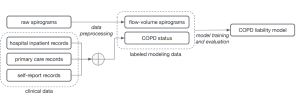
Lung diseases, including chronic obstructive pulmonary disease (COPD), are a leading cause of death worldwide. Early detection and treatment are critical for improving patient outcomes, but diagnosing lung diseases can be challenging. Machine learning (ML) models are transforming the field of pulmonology by enabling faster and more accurate prediction of lung diseases including COPD. In this blog, we’ll discuss the challenges of detecting / predicting lung diseases using machine learning, the clinical dataset used in research, supervised learning method used for building machine learning models. Challenges in Detecting Lung Diseases with Machine Learning Detecting and predicting lung diseases using machine learning can be challenging due to a lack of labeled …
KMeans Silhouette Score Python Example
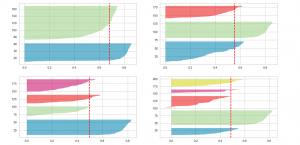
If you’re building machine learning models for solving different prediction problems, you’ve probably heard of clustering. Clustering is a popular unsupervised learning technique used to group data points with similar features into distinct clusters. One of the most widely used clustering algorithms is KMeans, which is popular due to its simplicity and efficiency. However, one major challenge in clustering is determining the optimal number of clusters that should be used to group the data points. This is where the Silhouette Score comes into play, as it helps us measure the quality of clustering and determine the optimal number of clusters. Silhouette score helps us get further clarity for the following …
Why & When to use Eigenvalues & Eigenvectors?

Eigenvalues and eigenvectors are important concepts in linear algebra that have numerous applications in data science. They provide a way to analyze the structure of linear transformations and matrices, and are used extensively in many areas of machine learning, including feature extraction, dimensionality reduction, and clustering. In simple terms, eigenvalues and eigenvectors are the building blocks of linear transformations. Eigenvalues represent the scaling factor by which a vector is transformed when a linear transformation is applied, while eigenvectors represent the directions in which the transformation occurs. In this post, you will learn about why and when you need to use Eigenvalues and Eigenvectors? As a data scientist/machine learning Engineer, one must …
Amazon Bedrock to Democratize Generative AI

Amazon Web Services (AWS) has announced the launch of Amazon Bedrock and Amazon Titan foundational models (FMs), making it easier for customers to build and scale generative AI applications with foundation models. According to AWS, they received feedback from their select customers that there are a few big things standing in their way today in relation to different AI use cases. First, they need a straightforward way to find and access high-performing FMs that give outstanding results and are best-suited for their purposes. Second, customers want integration into applications to be seamless, without having to manage huge clusters of infrastructure or incur large costs. Finally, customers want it to be …
SVM RBF Kernel Parameters: Python Examples
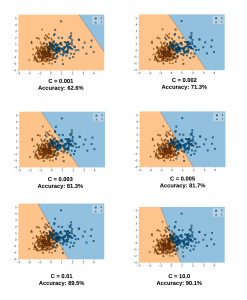
Support vector machines (SVM) are a popular and powerful machine learning technique for classification and regression tasks. SVM models are based on the concept of finding the optimal hyperplane that separates the data into different classes. One of the key features of SVMs is the ability to use different kernel functions to model non-linear relationships between the input variables and the output variable. One such kernel is the radial basis function (RBF) kernel, which is a popular choice for SVMs due to its flexibility and ability to capture complex relationships between the input and output variables. The RBF kernel has two important parameters: gamma and C (also called regularization parameter). …
Data Science Careers: India’s Job Market & AI Growth
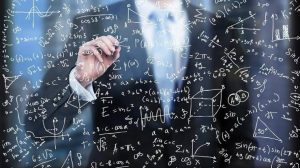
Aspiring data scientists and AI enthusiasts in India have a plethora of opportunities in store, thanks to the country’s booming AI, machine learning (ML), and big data analytics industry. According to a recent report by NASSCOM, India boasts the second-largest talent pool globally in these fields, with a remarkable AI skill penetration score of 3.09 [1]. The nation’s rapid growth in AI talent concentration and scientific publications underscores the immense potential for individuals looking to build a successful data science career in India. As the demand for skilled professionals surges, multiple factors contribute to the thriving industry. The higher-than-average compensation and growth prospects in the field make it an attractive …
Generative AI: Scaling Techniques for LLM Models
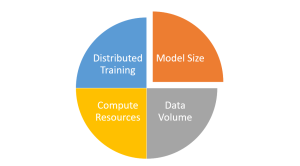
In the rapidly evolving world of artificial intelligence, large language models (LLMs) have emerged as a game-changing force, revolutionizing the way we interact with technology and transforming countless industries. These powerful models can perform a vast array of tasks, from text generation and translation to question-answering and summarization. However, unlocking the full potential of these LLMs requires a deep understanding of how to effectively scale these LLMs, ensuring optimal performance and capabilities. In this blog post, we will delve into the crucial concept of scaling techniques for LLM models and explore why mastering this aspect is essential for anyone working in the AI domain. As the complexity and size of …
Meta Unveils SAM and Massive SA-1B Dataset to Advance Computer Vision Research

Meta Researchers have, yesterday, unveiled a groundbreaking new model, namely Segment Anything Model (SAM), alongside an immense dataset, the Segment Anything Dataset (SA-1B), which together promise to revolutionize the field of computer vision. SAM’s unique architecture and design make it efficient and effective, while the SA-1B dataset provides a powerful resource to fuel future research and applications. The Segment Anything Model is an innovative approach to promptable segmentation that combines an image encoder, a flexible prompt encoder, and a fast mask decoder. Its design allows for real-time, interactive prompting in a web browser on a CPU, opening up new possibilities for computer vision applications. One of the key challenges SAM …
Quiz #85: MSE vs R-Squared?

Regression models are an essential tool for data scientists and statisticians to understand the relationship between variables and make predictions about future outcomes. However, evaluating the performance of these models is a crucial step in ensuring their accuracy and reliability. Two commonly used metrics for evaluating regression models are Mean Squared Error (MSE) and R-squared. Understanding when to use each metric and how they differ can greatly improve the quality of your analyses. Check out my related blog on this topic – Mean Squared Error vs R-Squared? Which one to use? To help you test your knowledge on MSE and R-squared (also known as coefficient of determination), we have created …
Machine Learning: Identify New Features for Disease Diagnosis
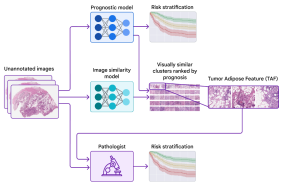
When diagnosing diseases that require X-rays and image-based scans, such as cancer, one of the most important steps is analyzing the images to determine the disease stage and to characterize the affected area. This information is central to understanding clinical prognosis and for determining the most appropriate treatment. Developing machine learning (ML) / deep learning (DL) based solutions to assist with the image analysis represents a compelling research area with many potential applications. Traditional modeling techniques have shown that deep learning models can accurately identify and classify diseases in X-rays and image-based scans and can even predict patient prognosis using known features, such as the size or shape of the …
Quiz: Linear Regression & F-Statistics

Linear Regression is one of the most widely used statistical methods for predictive modeling in various fields such as finance, marketing, and engineering. It involves fitting a linear equation to a set of data points, which can be used to make predictions about new data. One important aspect of linear regression is the use of F-Statistics, which is a statistical test used to determine the significance of the regression model. If you’re looking to test your knowledge of Linear Regression and F-Statistics, you’ve come to the right place! It will also be helpful if you are preparing for data science interviews. In this capsule quiz, we’ve compiled 10 questions that …
Python – Draw Confusion Matrix using Matplotlib
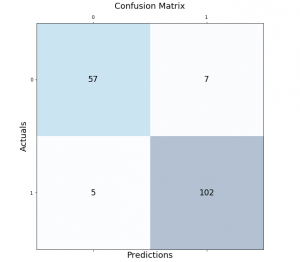
Classification models are a fundamental part of machine learning and are used extensively in various industries. Evaluating the performance of these models is critical in determining their effectiveness and identifying areas for improvement. One of the most common tools used for evaluating classification models is the confusion matrix. It provides a visual representation of the model’s performance by displaying the number of true positives, false positives, true negatives, and false negatives. In this post, we will explore how to create and visualize confusion matrices in Python using Matplotlib. We will walk through the process step-by-step and provide examples that demonstrate the use of Matplotlib in creating clear and concise confusion …
Different types of Time-series Forecasting Models
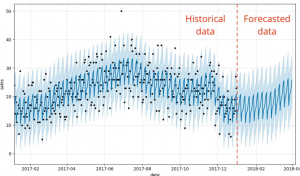
Forecasting is the process of predicting future events based on past and present data. Time-series forecasting is a type of forecasting that predicts future events based on time-stamped data points. Time-series forecasting models are an essential tool for any organization or individual who wants to make informed decisions based on future events or trends. From stock market predictions to weather forecasting, time-series models help us to understand and forecast changes over time. However, with so many different types of models available, it can be challenging to determine which one is best suited for a particular scenario. There are many different types of time-series forecasting models, each with its own strengths …
Transposed Convolution vs Convolution Layer: Examples
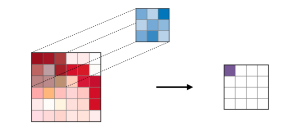
In the field of computer vision and deep learning, convolutional neural networks (CNNs) are widely used for image recognition tasks. A fundamental building block of CNNs is the convolutional layer, which extracts features from the input image by convolving it with a set of learnable filters. However, another type of layer called transposed convolution, also known as deconvolution, has gained popularity in recent years. In this blog post, we will compare and contrast these two types of layers, provide examples of their usage, and discuss their strengths and weaknesses. What are Convolutional Layer? What’s their purpose? A convolutional layer is a fundamental building block of a convolutional neural network (CNN). …
Support Vector Machine (SVM) Python Example
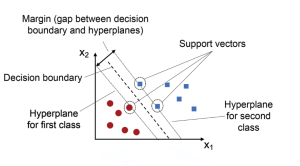
Support Vector Machines (SVMs) are a powerful and versatile machine learning algorithm that has gained widespread popularity among data scientists in recent years. SVMs are widely used for classification, regression, and outlier detection (one-class SVM), and have proven to be highly effective in solving complex problems in various fields, including computer vision (image classification, object detection, etc.), natural language processing (sentiment analysis, text classification, etc.), and bioinformatics (gene expression analysis, protein classification, disease diagnosis, etc.). In this post, you will learn about the concepts of Support Vector Machine (SVM) with the help of Python code example for building a machine learning classification model. We will work with Python Sklearn package for building the …
I found it very helpful. However the differences are not too understandable for me